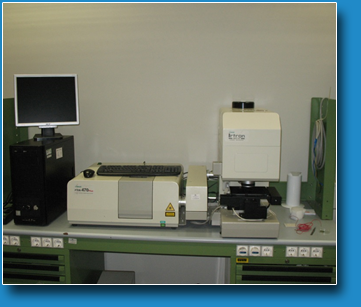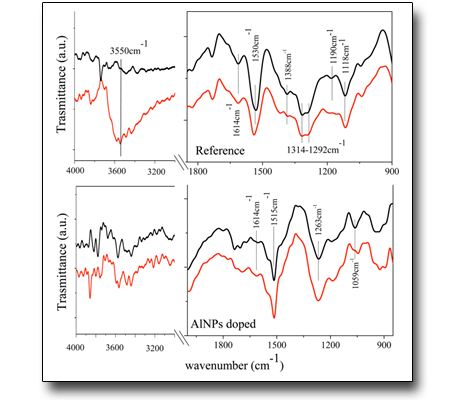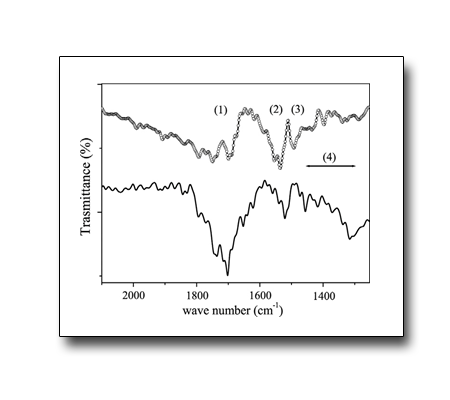
Jasco FT/IR 470 Plus interferometer with IRTRON IRT-30 microscope
Barbara Paci -
A simple device called an interferometer is used to identify samples by producing an optical signal with all the IR frequencies encoded into it. Then, the signal is decoded by applying a mathematical technique known as Fourier transformation. This computer-generated process then produces a mapping of the spectral information. The resulting graph is the spectrum, which is then searched against reference libraries for identification.
TECHNICAL SPECIFICATIONS
- Meaurement range: 7800-360 cm-1
- Accuracy: ±0.01cm-1
- Resolution: 0.9, 2, 4, 8, 16 cm-1
- Optical Path: Singolo raggio
- Detector:DLATGS
- Light source: ceramic
AVAILABLE TECHNIQUES
-
FTIR measurements in transmission on liquids/ solids in cuvette
-
FTIR measurement son films in reflection mode by means of IRTRON IRT-30 microscope
-
FTIR 2D Mapping of films
SAMPLES
-
Solid and liquid samples in FTIR standard cuvette for transmission measurements.
-
Thin films samples for measurements in reflection ode, max. dimensions 20*20cm.
USE FOR
-
Chemical complementary analysis of thin films and solutions.
CASE STUDIES
Enhanced Stability of Aluminum Nanoparticle-Doped Organic Solar Cells.
Enhancement of the stability of bulk heterojunction (BHJ) organic photovoltaic (OPV) devices is reported by the addition of surfactant-free aluminum (Al) nanoparticles (NPs) into the photoactive layer.
In particular, Fourier transform infrared (FTIR) spectroscopy experiments were performed and complemented with device degradation electrical measurements. It is found that the embedded Al NPs act as performance stabilizers, giving rise to enhanced structural stability of the active blend. Furthermore, it is revealed that the observed improvement can also be ascribed to NP-mediated mitigation of the photo-oxidation eff ect.
This study addresses a major issue in OPV devices, that is, photoinduced stability, indicating that the exploitation of Al NPs could be a successful approach toward fabricating OPVs exhibiting long-term operating lifetimes.
See: M.Sygletou,G. Kakavelakis, B.Paci, et al. ACS Appl. Mater. Interfaces 2015, 7, 17756−17764


Here we report on the effect of light on surface and bulk morphology, structural and optical properties of polymer/fullerene blends used for organic solar cells. The crystallization kinetics of the organic film molecules was followed in real time during illumination, by time-resolved X-ray diffraction, applied in-situ, jointly with atomic force microscopy. The occurrence of possible phase separation of the two components was detected. This latter hypothesis was confirmed by Fourier Transform Infrared spectroscopy (FTIR) experiments.
As a result of such cross monitoring, a comprehensive picture of the chemical/physical process concurring to the devices photo-active layers aging was gained.
See: B. Paci et al. Chemical Physics Letters 504 (2011) 216–220

 English (UK)
English (UK)  Italiano (Italia)
Italiano (Italia)